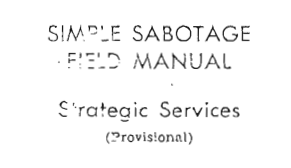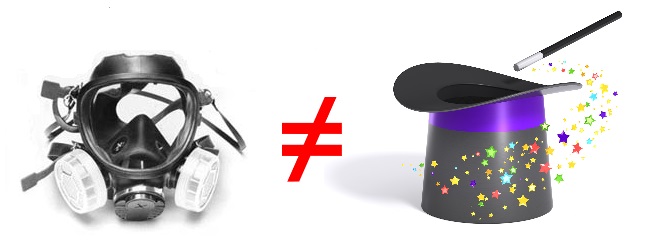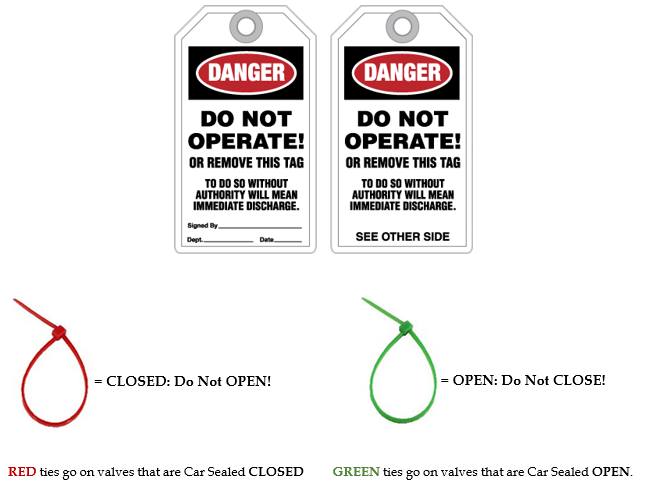The SOP reference element guideline and RESOP/ROSOP reference templates have been updated for 2017. The changes are basically broken into two groups: Continuous Improvement and IIAR 7.
Continuous Improvement: As always, there are a lot of little change suggestions that have been built up over time that were expressed in different templates in slightly different ways. Here are some of the change highlights in this section:
- Section breaks are all now 3pt and merged into a single cell.
- Stray CG Times font text changed to the default Book Antiqua that is used everywhere else.
- All RESOPs (and Appropriate ROSOPs) follow this section order:
- Normal Startup
- Monitor Normal Operations
- Emergency Operations
- Emergency Shutdown
- Manual Shutdown and Isolation
- Maintenance Procedure(s) such as Oil Draining and schedules MI tasks.
- Startup steps were re-organized and harmonized between equipment types.
- HOA/LOTO steps made more explicit and consistent.
- Emergency Shutdown section easier to follow and harmonized between equipment types.
- Added text referencing the Incident Investigation element in the Emergency Shutdown section.
- Shutdown section now starts with an option to just STOP the unit using the control computer/panel and then provides steps to Isolate and pump it down.
- Harmonized Operating Limits, Consequences of Deviation and Steps Required to Correct or Avoid Deviation between equipment types. These sections were also harmonized with consistent BOLDing of the relevant variable between the sections as appropriate.
IIAR 7: I have long bypassed IIAR 7 “Developing Operating Procedures for Closed-Circuit Ammonia Mechanical Refrigerating Systems,” preferring to use the CCPS “Guidelines for Writing Effective Operating and Maintenance Procedures.” While my reference templates still use the CCPS as their basis, I felt it necessary to perform a Gap-Analysis between the templates I’ve been using (and continuously improving) for over a decade and the requirements in IIAR 7-2013. This is especially important because the International Machine Code (IMC) has been updated to point to IIAR 2-2014 (Safe Design of Closed-Circuit Ammonia Refrigeration Systems) which references IIAR 7-2013. While I am still not calling IIAR7 RAGAGEP in my PSM programs, I wanted to ensure that the PSM program SOP(s) were compliant with it. While there were no significant changes necessary to make the templates more compliant with IIAR 7, some changes were necessary. Here’s what changes were required for IIAR 7 compliance:
- Explicit reference to control alarms during Start-up
- Updated checks during Normal Operations to ensure coverage of all the items listed in IIAR 7
- Include Supervisory Notification during Shutdowns
For those of you who use these reference templates, they are available in the Google Share in a directory called “IIAR 7 Mods.” After a few months of trials and minor revisions, these templates will replace the existing templates in the main directory. The old templates will be rendered obsolete and moved to the 0bsolete directory.
If you have existing SOPs using the 2016 (or earlier) versions of the template, you will want to compare the new templates with your existing implementation. Please note: These new templates will be the basis for ALL future template modifications / updates.
Below is a list of ALL the changes made to the SOP template section.
- SOP Guidelines
- Modified Implementation Policy: Operating Phases: Temporary Operation to include an explanation that a Temporary Operation SOP would require an MOC which would involve supervisory oversight due to the requirements of IIAR 7 6.2.3.1(a), 6.3.3.1(a), 6.5.3.1(a), 6.6.3.1(a), 6.7.3.1(a) & 6.8.3.1(a).
- Compressor RESOP Template
- Re-ordered startup steps to optimize efficiency
- Added explicit reference to control alarms during Start-up due to the requirements of IIAR 7 6.2.1.1(g)
- Modified Monitor Normal Operations sections to include explicit checks for all appropriate items in section of IIAR 7 6.2.2.1
- Optimized HOA / LOTO call-out Made more explicit LOTO call-outs in the Manual Shutdown section.
- Optimized lead-in language to Manual Shutdown section and closure of Emergency Shutdown section to include Supervisory notification required under of IIAR 7 6.2.4 & 6.2.5.1. Manual Shutdown now starts with an option to just STOP the unit and then offers steps to pump it down.
- Optimized Emergency Shutdown section to make it easier to follow. Added an explicit requirement to notify supervisory personnel so they can evaluate the need for an Incident Investigation.
- Updated the Safety & Health section to use more of the IIAR example wording.
- Updated Emergency Operations & Equipment Information section to standardize use of capitalization and bold text.
- Condenser RESOP Template
- Re-ordered startup steps to optimize efficiency
- Added explicit reference to control alarms during Start-up due to the requirements of IIAR 7 6.3.1.1(g)
- Modified Monitor Normal Operations sections to include explicit checks for all appropriate items in section of IIAR 7 6.3.2.1
- Optimized HOA / LOTO call-out Made more explicit LOTO call-outs in the Manual Shutdown section.
- Optimized lead-in language to Manual Shutdown section and closure of Emergency Shutdown section to include Supervisory notification required under of IIAR 7 6.3.4 & 6.3.5.1. Manual Shutdown now starts with an option to just STOP the unit and then offers steps to pump it down.
- Optimized Emergency Shutdown section to make it easier to follow. Added an explicit requirement to notify supervisory personnel so they can evaluate the need for an Incident Investigation.
- Updated the Safety & Health section to use more of the IIAR example wording.
- Updated Emergency Operations & Equipment Information section to standardize use of capitalization and bold text.
- Air Unit RESOP Template
- Re-ordered startup steps to optimize efficiency
- Added explicit reference to control alarms during Start-up due to the requirements of IIAR 7 6.4.1.1(g)
- Modified Monitor Normal Operations sections to include explicit checks for all appropriate items in section of IIAR 7 6.4.2.1
- Optimized HOA / LOTO call-out Made more explicit LOTO call-outs in the Manual Shutdown section.
- Optimized lead-in language to Manual Shutdown section and closure of Emergency Shutdown section to include Supervisory notification required under of IIAR 7 6.4.4 & 6.4.5.1. Manual Shutdown now starts with an option to just STOP the unit and then offers steps to pump it down.
- Optimized Emergency Shutdown section to make it easier to follow. Added an explicit requirement to notify supervisory personnel so they can evaluate the need for an Incident Investigation.
- Updated the Safety & Health section to use more of the IIAR example wording.
- Updated Emergency Operations & Equipment Information section to standardize use of capitalization and bold text.
- Vessel RESOP Template
- Re-ordered startup steps to optimize efficiency
- Added explicit reference to control alarms during Start-up due to the requirements of IIAR 7 6.5.1.1(g)
- Modified Monitor Normal Operations sections to include explicit checks for all appropriate items in section of IIAR 7 6.5.2.1
- Optimized HOA / LOTO call-out Made more explicit LOTO call-outs in the Manual Shutdown section.
- Optimized lead-in language to Manual Shutdown section and closure of Emergency Shutdown section to include Supervisory notification required under of IIAR 7 6.5.4 & 6.5.5.1. Manual Shutdown now starts with an option to just STOP the unit and then offers steps to pump it down.
- Optimized Emergency Shutdown section to make it easier to follow. Added an explicit requirement to notify supervisory personnel so they can evaluate the need for an Incident Investigation.
- Updated the Safety & Health section to use more of the IIAR example wording.
- Updated Emergency Operations & Equipment Information section to standardize use of capitalization and bold text.
- Recirculating Vessel RESOP Template
- Re-ordered startup steps to optimize efficiency
- Added explicit reference to control alarms during Start-up due to the requirements of IIAR 7 6.5.1.1(g)
- Modified Monitor Normal Operations sections to include explicit checks for all appropriate items in section of IIAR 7 6.5.2.1
- Optimized HOA / LOTO call-out Made more explicit LOTO call-outs in the Manual Shutdown section.
- Optimized lead-in language to Manual Shutdown section and closure of Emergency Shutdown section to include Supervisory notification required under of IIAR 7 6.5.4 & 6.5.5.1. Manual Shutdown now starts with an option to just STOP the unit and then offers steps to pump it down.
- Optimized Emergency Shutdown section to make it easier to follow. Added an explicit requirement to notify supervisory personnel so they can evaluate the need for an Incident Investigation.
- Updated the Safety & Health section to use more of the IIAR example wording.
- Updated Emergency Operations & Equipment Information section to standardize use of capitalization and bold text.
- Added reminder about documenting oil drained during the oil draining procedural section.
- Heat Exchanger RESOP Template
- Re-ordered startup steps to optimize efficiency
- Added explicit reference to control alarms during Start-up due to the requirements of IIAR 7 6.4.1.1(g)
- Modified Monitor Normal Operations sections to include explicit checks for all appropriate items in section of IIAR 7 6.4.2.1
- Optimized HOA / LOTO call-out Made more explicit LOTO call-outs in the Manual Shutdown section.
- Optimized lead-in language to Manual Shutdown section and closure of Emergency Shutdown section to include Supervisory notification required under of IIAR 7 6.4.4 & 6.4.5.1. Manual Shutdown now starts with an option to just STOP the unit and then offers steps to pump it down.
- Optimized Emergency Shutdown section to make it easier to follow. Added an explicit requirement to notify supervisory personnel so they can evaluate the need for an Incident Investigation.
- Updated the Safety & Health section to use more of the IIAR example wording.
- Updated Emergency Operations & Equipment Information section to standardize use of capitalization and bold text.
- Autopurger RESOP Template(s)
- Re-ordered startup steps to optimize efficiency
- Added explicit reference to control alarms during Start-up due to the requirements of IIAR 7 6.4.1.1(g)
- Modified Monitor Normal Operations sections to include explicit checks for all appropriate items in section of IIAR 7 6.4.2.1
- Optimized HOA / LOTO call-out Made more explicit LOTO call-outs in the Manual Shutdown section.
- Optimized lead-in language to Manual Shutdown section and closure of Emergency Shutdown section to include Supervisory notification required under of IIAR 7 6.4.4 & 6.4.5.1. Manual Shutdown now starts with an option to just STOP the unit and then offers steps to pump it down.
- Optimized Emergency Shutdown section to make it easier to follow. Added an explicit requirement to notify supervisory personnel so they can evaluate the need for an Incident Investigation.
- Updated the Safety & Health section to use more of the IIAR example wording.
- Updated Emergency Operations & Equipment Information section to standardize use of capitalization and bold text.
- Overall System Operation ROSOP 101 Template
- Updated the Safety & Health section to use more of the IIAR example wording.
- NH3Vent ROSOP Template
- Updated the Safety & Health section to use more of the IIAR example wording.
- Updated Emergency Operations & Equipment Information section to standardize use of capitalization and bold text. A nearly complete rewrite of the section as well.
- Car-Seal ROSOP Template
- Updated the Safety & Health section to use more of the IIAR example wording.
- Line Opening (LEO) ROSOP Template
- Updated the Safety & Health section to use more of the IIAR example wording.
- Removed – Non-Permit version of the ROSOP. Still available in 0bsolete archive.
- Lockout/Tagout (LOTO) ROSOP Template
- Updated the Safety & Health section to use more of the IIAR example wording.
- Personal Protective Equipment (PPE) ROSOP Template
- Updated the Safety & Health section to use more of the IIAR example wording.
- Quality Assurance (QA) ROSOP Template
- Updated the Safety & Health section to use more of the IIAR example wording.
Yes, there are a LOT of changes! If you want any assistance or clarification on any of these changes, feel free to contact me.




 In an era where employees no longer feel any real loyalty from their employer, it’s not surprising that this is a problem. After all, if you train the new technician, what’s to stop them from taking your job? Now, I could explain all the ways that a trained technician would help your process (and you) be safer and more effective, but I’m going to assume you’ve already heard this before and it wasn’t enough to convince you. Instead, I’m going to appeal to something else: If nobody else can do your job, then you cannot be promoted.
In an era where employees no longer feel any real loyalty from their employer, it’s not surprising that this is a problem. After all, if you train the new technician, what’s to stop them from taking your job? Now, I could explain all the ways that a trained technician would help your process (and you) be safer and more effective, but I’m going to assume you’ve already heard this before and it wasn’t enough to convince you. Instead, I’m going to appeal to something else: If nobody else can do your job, then you cannot be promoted.

 PPE isn’t some sort of magic relic that provides protection while you are within a certain radius of its location. It works when – and ONLY when – you use it properly. This same foolish thinking that allows people to require APR’s “nearby” could be applied to seat-belts with about the same effectiveness: “Well, no he wasn’t wearing the seat-belt during the accident. Funny thing: the darned seat-belt was right there next to him and he still went out the window when the car hit the tree.”
PPE isn’t some sort of magic relic that provides protection while you are within a certain radius of its location. It works when – and ONLY when – you use it properly. This same foolish thinking that allows people to require APR’s “nearby” could be applied to seat-belts with about the same effectiveness: “Well, no he wasn’t wearing the seat-belt during the accident. Funny thing: the darned seat-belt was right there next to him and he still went out the window when the car hit the tree.”

